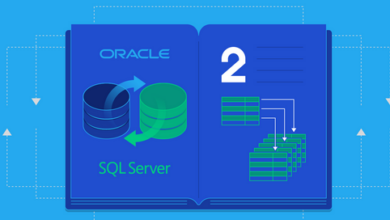What is Inbound Marketing?
This article is originally posted on Galactic Fed.
The Information Age is defined as the rapid transmission and access to vast amounts of information. This age has perpetually changed societies, cultures, and economies, including the marketing landscape. In the 1970s, individuals were exposed to an estimated number of 500 daily advertisements. As businesses continued to leverage digital advertising channels, this average grew to a monstrous 6,000 – 10,000 daily advertisements per person in 2020.
The invention of the Internet has opened endless opportunities to reach a global audience through digital marketing channels; however, while companies continued to capitalize on this mass exposure, consumers became proficient at filtering information to combat this information overload.
Modern consumers’ ability to make educated purchasing decisions has led to a decrease in trust and reliance on disruptive, unsolicited advertisements. People are increasingly utilizing tools like ad blockers and spam filters, and the reality is, nobody wants others to tell them what to do or ask for money. An inevitable shift in buyer behavior and psychology have led to a new marketing methodology to enter our atmosphere: Inbound.
As traditional marketing strategies began to lose effectiveness, Marketers began to ask the question: How can businesses effectively engage consumers in the modern age? In 2006, HubSpot came up with the term, “Inbound Marketing”, to describe the new marketing methodology that better aligns with the buyer’s empowered mindset and journey.
Twice as many marketers report inbound marketing as their primary method of lead generation compared to outbound marketing and 46 percent of marketers to report inbound as a higher ROI than outbound generates. While implementing a combination of Inbound and Outbound strategies has proved most successful for companies, this guide will help you understand how the new age has altered consumption practices, illustrate the importance of Inbound, as well as assist you in integrating this methodology in your marketing mix.
What is Inbound Marketing?
In the contemporary digital landscape, people are searching for and researching solutions to their problems online. Inbound marketing is a fundamental revolution from a brand-focused marketing strategy to a customer-focused approach that acknowledges the power of modern buyers — it’s really all about helping others.
The objective of inbound marketing is to build trust and credibility that attract buyers to your company organically. Inbound marketing involves creating valuable content and incentives for your prospects at every stage of the buyer’s journey. As the flywheel illustrates, inbound marketing is the cyclical process of attracting, engaging, and delighting people.
Based on a deep understanding of your target audience, creating educational and relevant content demonstrates you are an industry leader and naturally brings in people with sincere interest. Once your platform generates traffic, you can engage people and build stronger relationships with conversations. Continue to provide exceptional content, and your customers will be delighted as they will be able to rely on you for pain point solutions. By converting leads to sales, you will generate ideal, loyal customers that will grow your business drastically. Generating three times more leads than outbound advertising strategies, Inbound Marketing is an essential, powerful strategy capable of increasing brand reach, traffic, engagement, and conversions.
Essential Inbound Marketing Strategies and Tactics
In order to run a robust inbound marketing campaign, you must define your goals and KPIs, identify your ideal buyer persona, choose your platforms, provide content, track and report results, and never stop optimizing. Remember buying behavior will continue to change so tracking and reporting results are essential for your marketing campaign’s efficiency. If something isn’t working, change it. Here are some of the most important strategies and tactics to utilize for your 2020 Inbound marketing campaign — adapting these to fit your company in creative ways will boost campaign effectiveness!
- Content is the backbone of an Inbound strategy. Content serves as a method to attract, engage, and nurture audiences, and ideally close customers. When the buyer persona is adequately defined, content creation and distribution can begin. Successful campaigns utilize various tactics to create content including; print media, video content, infographics, social media, opt-in emails, events, press/ public relations, events, emails, web pages, thought leadership, blogging, community building, word of mouth, public speaking, influencer outreach, and CMS. Check out our comprehensive content marketing guide to implement an effective content strategy of your own.
- SEO is critical to your Inbound strategy. A strong, long-term SEO ensures your website ranks higher in search results, increasing your site’s visibility, organic traffic, and conversions for your business. Some strategies to optimize SEO include; improving page speed, keyword research and integration, and designing a user-friendly site. Check out our guide to SEO.
- Social Media is an effective way to maintain visibility, credibility, and loyalty. Through social media, a company is able to build a community around their brand — let’s be real, everyone is on it. Social media platforms are not only excellent channels to share company content, but also a place to increase credibility, awareness, and build stronger relationships through dialogue. Some social media strategies include; generating referrals, having open dialogues, participating on forums, and sharing promotions.
- Retargeted Ads and PPC are effective ways to improve website traffic, visibility, and generating quality leads. Despite the price tag on these ads, you have control over the amount invested. when used efficiently this strategy can boost ROI. Some strategies for retargeted ads and PPC include; collecting data and insights, and bid on relevant keywords to display targeted ads.
Pros and Cons of Inbound Marketing
Although the Inbound methodology works for a wide range of businesses, there are some cases where this strategy is not suitable for your business including; companies that sell generic products, offer geographically limited products or services, do not want to grow, or are not willing to nurture and convert leads. Before you dive into your Inbound campaign, acknowledging the pros and cons will help you determine whether or not Inbound marketing is right for your business.
- Generates quality traffic and leads +
- Builds trust and credibility +
- Saves cost and improves your return on investment +
- Builds loyal relationships with your customers +
- Gain valuable insights into your audience +
- A life-long process –
- Not mechanical –
- Takes time and effort –
The traditional, outbound marketing strategies are no longer as effective as they once were. Of companies exceeding their revenue goals, 70% report attracting more than 10,000 visitors per month. If you are up to putting in time and energy, producing epic content, and tackling SEO and media platforms, Inbound is critical for business growth in today’s digital landscape. The heart of the Inbound method is providing value to people by attracting an audience to your business, nurturing leads into customers through high-value content creation. By diversifying your marketing tactics to include Inbound strategy, your traffic, sales, leads, customer loyalty will grow exponentially.






